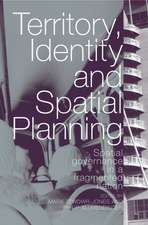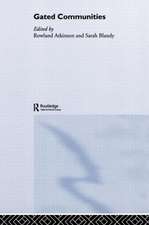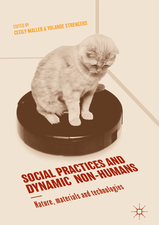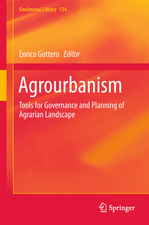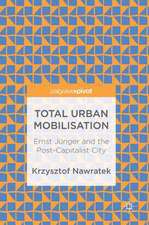Public Participation as a Tool for Integrating Local Knowledge into Spatial Planning: Planning, Participation, and Knowledge
Autor Tal Bermanen Limba Engleză Hardback – 2 dec 2016
| Toate formatele și edițiile | Preț | Express |
|---|---|---|
| Paperback (1) | 361.50 lei 38-44 zile | |
| Springer International Publishing – 5 iul 2018 | 361.50 lei 38-44 zile | |
| Hardback (1) | 396.40 lei 3-5 săpt. | |
| Springer International Publishing – 2 dec 2016 | 396.40 lei 3-5 săpt. |
Preț: 396.40 lei
Nou
Puncte Express: 595
Preț estimativ în valută:
75.85€ • 79.41$ • 62.76£
75.85€ • 79.41$ • 62.76£
Carte disponibilă
Livrare economică 15-29 martie
Preluare comenzi: 021 569.72.76
Specificații
ISBN-13: 9783319480626
ISBN-10: 3319480626
Pagini: 310
Ilustrații: XXIII, 220 p. 18 illus., 8 illus. in color.
Dimensiuni: 155 x 235 x 23 mm
Greutate: 0.61 kg
Ediția:1st ed. 2017
Editura: Springer International Publishing
Colecția Springer
Locul publicării:Cham, Switzerland
ISBN-10: 3319480626
Pagini: 310
Ilustrații: XXIII, 220 p. 18 illus., 8 illus. in color.
Dimensiuni: 155 x 235 x 23 mm
Greutate: 0.61 kg
Ediția:1st ed. 2017
Editura: Springer International Publishing
Colecția Springer
Locul publicării:Cham, Switzerland
Cuprins
Chapter 1. Abstract.- Chapter 2. Introduction.- Chapter 3. Conceptual Context.- Chapter 4. Test Case: The Planning Process of Haifa’s Range Artery.- Chapter 5. Test Case: The Planning Process of Tel Aviv’s Shlavìm Artery.- Chapter 6. Evaluation of the Participation Methods’ Effectiveness.- Chapter 7. Discussion: Comparison of Methods of Public Participation.- Chapter 8. Public Participation: Between Theory and Practice.- Chapter 9. “Open Edges” and New Horizons in Public Participation.- Chapter 10. Conclusions.
Notă biografică
Dr. Berman is the initiator and head of the program in “Public Participation in Urban and Regional Planning” at the Israel Standards Institute, and he is currently developing and perfecting participatory methods. He has been working on scientific research and development of residents’ assessment instruments within the framework of the InterRAI. Dr. Berman has been invited to give presentations on participatory planning at dozens of internationally established conferences and advanced schools.
Textul de pe ultima copertă
This book provides a state of the art approach to participatory planning, and generates innovative thought in planning theory and knowledge study. The book introduces a new conceptual framework for participatory planning, one which redefines concepts that have been taken for granted for too long: those of “public participation” and “local knowledge”. It draws on the rich repertoire of public participation practices that have developed globally over the last 50 years, and investigates the following questions: Which participatory practices most effectively capture residents’ genuine spatial needs, perceptions and desires? And how can these be incorporated into actual plans? The book is based on an empirical comparative examination of the effectiveness of various participatory processes, and proposes practical solutions for public participation through two new instruments: the Practices Evaluation Tool, and the Participatory Methods Ladder. These instruments calibrate participation methods according to certain criteria, in order to improve their ability to extract local knowledge and incorporate it into planning deliverables. These new instruments correspond to and elaborate on Arnstein’s ladder - the 1969 theoretical landmark for participatory planning. Both academics and practitioners in the area of urban and regional planning will find this book to be an invaluable resource, given the way it develops both theoretical and practical cutting-edge outcomes.
Caracteristici
Redefines the concepts of “local knowledge” and “public participation,” which have long since been taken for granted Constitutes the state of the art in ‘public participation in planning’ Introduces a new concept of participatory planning and explores innovative new directions in planning th Includes supplementary material: sn.pub/extras


